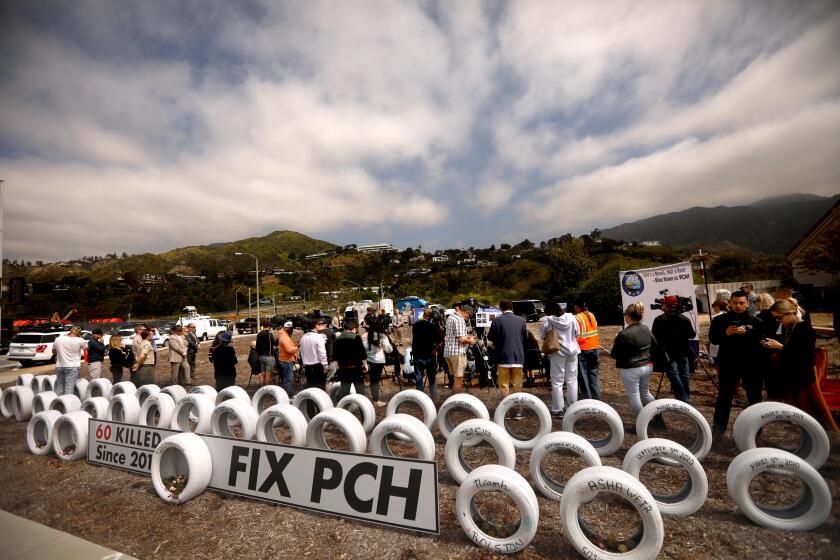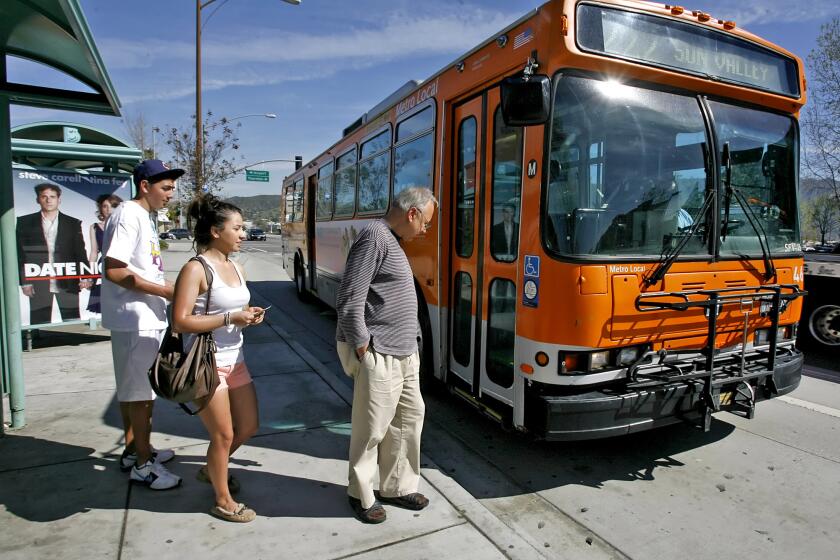Tanker Truck Safety
The article (“Gasoline Tankers Seen as ‘Rolling Bombs’ of the Road,” Sept. 21) unfortunately failed to recognize several important efforts under way to improve the safety and efficiency of tanker truck transportation in the West.
The petroleum industry is deeply concerned about safety as we carry out the task of supplying gasoline to motorists. Each year, California motorists consume about 13 billion gallons of gasoline. The most economical, efficient and safe method of moving this amount of gasoline is by truck, requiring over 1.4 million deliveries every year. A service station, on average, receives at least one delivery each day. These deliveries are made around-the-clock in order to avoid peak traffic hours, and reduce accident risk.
Advances in vehicle design have increased safety and reduced the possibility of accidents. These include lowering the center of gravity, increasing the cargo capacity and widening the tires. Lowering the center of gravity on a truck carrying liquid provides greater stability, making the vehicles less prone to rollovers. The California Highway Patrol acknowledges this advantage.
An increase in the weight limit also provides a safety benefit. Increasing the cargo capacity of a truck makes the task of delivering gasoline more efficient and safer by reducing the frequency of deliveries. Obviously, fewer trucks on the road reduce traffic congestion and also cut down on air pollution. In states where truck weight restrictions are higher, the use of larger trucks has resulted in at least 25% fewer trips needed to deliver the same volume of fuel. Thirteen other states (including Washington, Oregon and Nevada) are already enjoying the benefits of increased weight limits.
Wider tires, another safety development, allow the payload to sit closer to the ground, further lowering the center of gravity and stabilizing the truck.
Companies have extensive driver trainer and accident prevention programs to help ensure that deliveries are made as safely as possible. These efforts have resulted in accident rates for gasoline tanker trucks that are among the best in the trucking industry. It should go without saying that our industry has a distinct incentive to avoid both the human and financial costs that result from accidents.
DOUGLAS F. HENDERSON
Executive Director
Western States Petroleum Assn., Glendale
More to Read
Start your day right
Sign up for Essential California for news, features and recommendations from the L.A. Times and beyond in your inbox six days a week.
You may occasionally receive promotional content from the Los Angeles Times.






